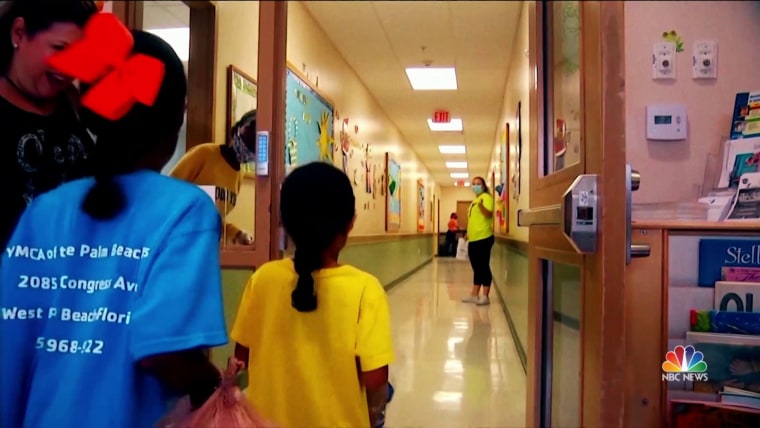On TikTok, audio offers new virality to misinformation
In December, a man from Wisconsin, who goes by the username the_alpha_k9 on TikTok, uploaded a testimonial-style video to the platform and told his thousands of followers that he was not taking a Covid-19 vaccine.
“They tell me in 40 years of research that there is no vaccine for HIV … for cancer, no vaccine … the common cold, no vaccine,” he said. “But in a year we will have a vaccine against COVID-19 and you would like me to take it … thank you, but no thanks.”
It was one of the many exposed, everyday anti-vaccination conversations that permeated many social platforms during the Covid-19 pandemic. But it has taken on a life of its own on TikTok, where users regularly reuse popular audio tracks to create their own videos. More than 4,500 videos were recorded with audio that were viewed more than 16 million times, according to a report released Monday by the Institute for Strategic Dialogue, a London-based organization tracking disinformation.
It’s an example of what researchers say is a unique problem with the video platform, which in recent years has become an immensely popular destination for everything from viral dance routines to comedy skit and sectarian content.
“People use TikTok to post and host harmful Covid misinformation and it’s very popular,” said Ciaran O’Connor. Analyst at the Institute of Strategic Dialogue and lead author of a new report on misinformation in the app. “This feature is used exactly as TikTok developed it. The audio is shared and responded to. But the consequence is that it creates a feedback loop of anti-vaccine narratives. “
After a request for comment, TikTok removed the videos and audios shared in the report or restricted their distribution.
A TikTok spokesperson said in a statement: “We strive to promote an authentic TikTok experience by limiting the distribution of misleading content, including audio, and by promoting authoritative information about COVID-19 and vaccines on our app. Misinformation is an industry challenge and we appreciate reports that help us take action in the event of violations. “
The Institute for Strategic Dialogue tracked misinformation about Covid-19 vaccines distributed via TikTok’s sound feature. It turns out that anti-vaccination audio tracks have gone viral as a kind of chain message, with the original claims and content often being hidden by TikTok. In other words, a TikTok feature is used to post or expand content that violates TikTok’s policy against Covid-19 misinformation.
The man behind the_alpha_k9, a relatively small account by TikTok standards with around 28,000 followers, did not respond to requests for comments, and the original video has been deleted. The video, a recitation of a popular anti-vaccine meme, would be reported by multiple platforms for misinformation and debunked by fact-checkers later in December, showing the significant differences between the diseases cited and Covid-19, as well as a misunderstanding of. noted the development of mRNA vaccines.
TikTok is the fastest growing social media app in the world with approximately 100 million monthly active US users and 2 billion worldwide downloads, according to the company. The app provides an easy way to create videos on existing backing tracks and shows users videos based on a powerful recommendation algorithm.

The Institute of Strategic Dialogue analyzed 124 TikTok videos containing misinformation about vaccines for its report. The videos received more than 20 million views and 2 million likes, comments and shares. Only two videos contained a label advising users of factual information, a safety feature introduced in December to combat the mounting misinformation about vaccines on the platform.
TikTok has since promoted its crackdown on Covid-19 misinformation as part of a commitment to “keep TikTok safe for creative expression throughout the pandemic,” according to a company blog post. “We take our responsibility to keep harmful misinformation out of TikTok incredibly seriously.”
The results of the report are likely to be only the tip of the iceberg.
“TikTok is something of a walled garden,” said O’Connor, pointing out the challenges of tracking content on the platform. “Misinformation is harder to find, but also harder for TikTok or fact checkers to combat.”
The videos are also used to target specific communities, O’Connor said. Several users had translated the audio into other languages. Although the sounds are less common and less popular, some people have used them to respond with videos by checking the facts or refuting the claims.
One video – which used audio from removed content of a woman claiming to be a nurse said she had Bell’s palsy after being vaccinated – was an indication of how misinformation was targeting black users, according to the report aimed. A fact check by The Associated Press found that “details of the video are incorrect,” including that there was no record of a registered nurse using the woman’s name. Still, the video spread across many platforms. The video titled “They want blacks to be recorded first for a reason” has been removed from TikTok, but the audio is still available and has been used to create new anti-vaccination content.
The user behind another sound, who described herself as the mother of three children, claimed in a post that TikTok had removed her video “for violating the community”. She had played a recording, allegedly from the Centers for Disease Control and Prevention, urging certain people not to be vaccinated for a year and making false claims about widespread deaths from vaccination.
Their original video was removed in April, but the audio is still available and has been used in 375 videos, the most popular of which received tens of thousands of views. No feature information labels.


Comments are closed.